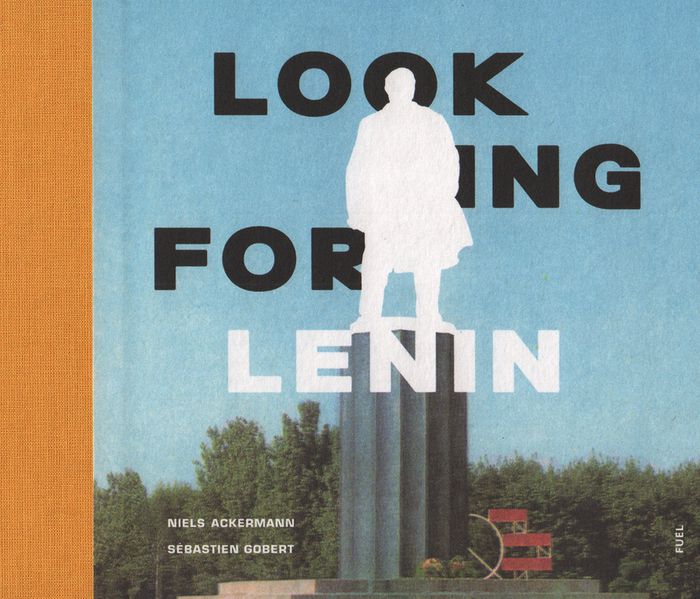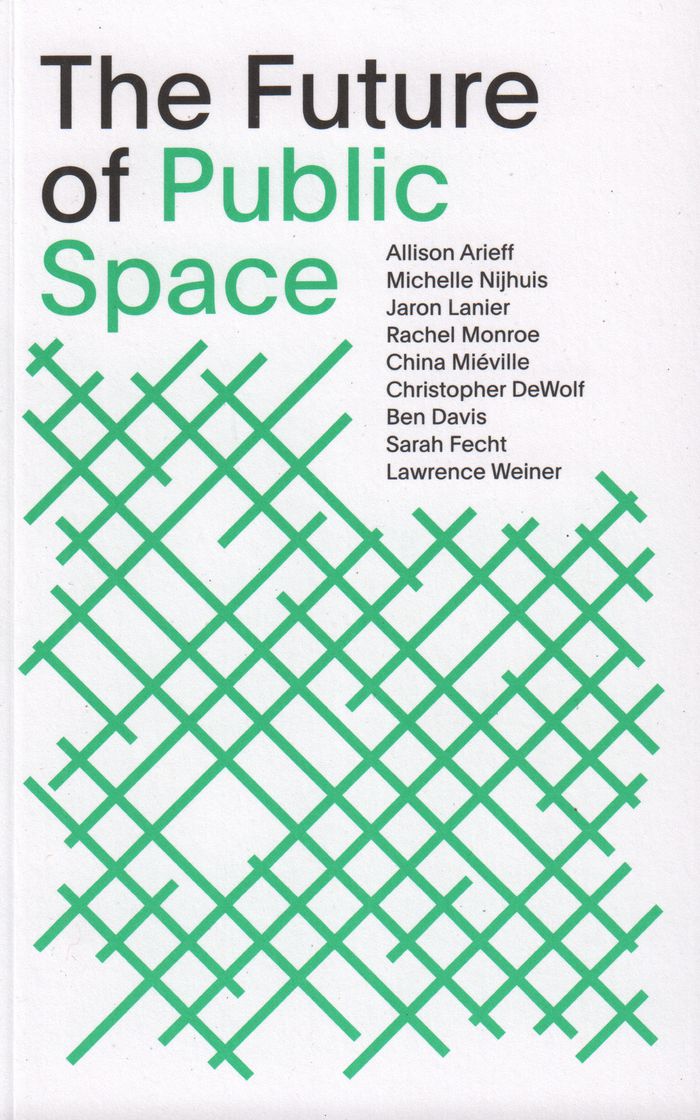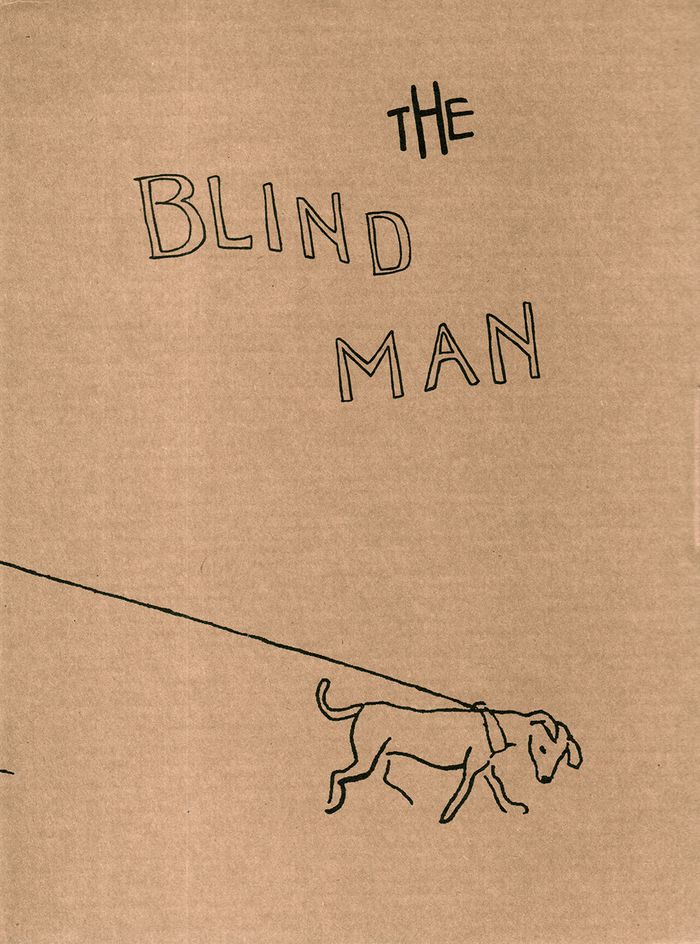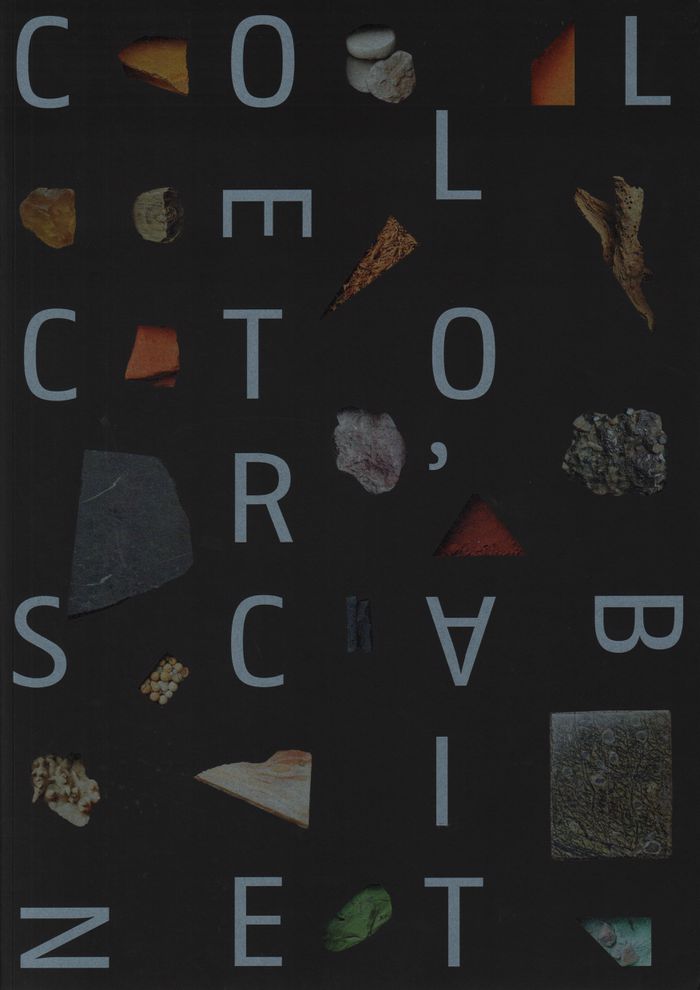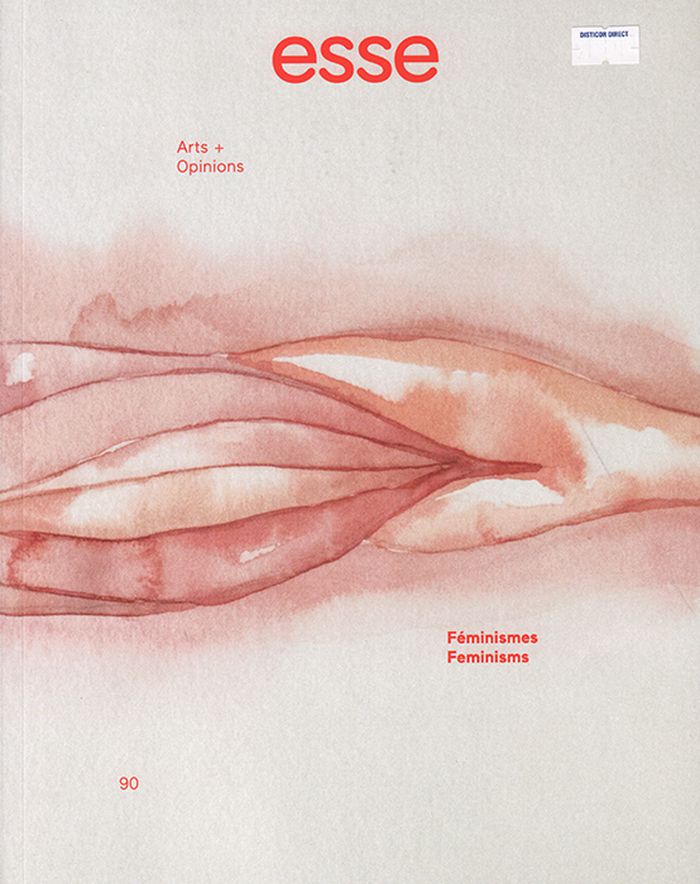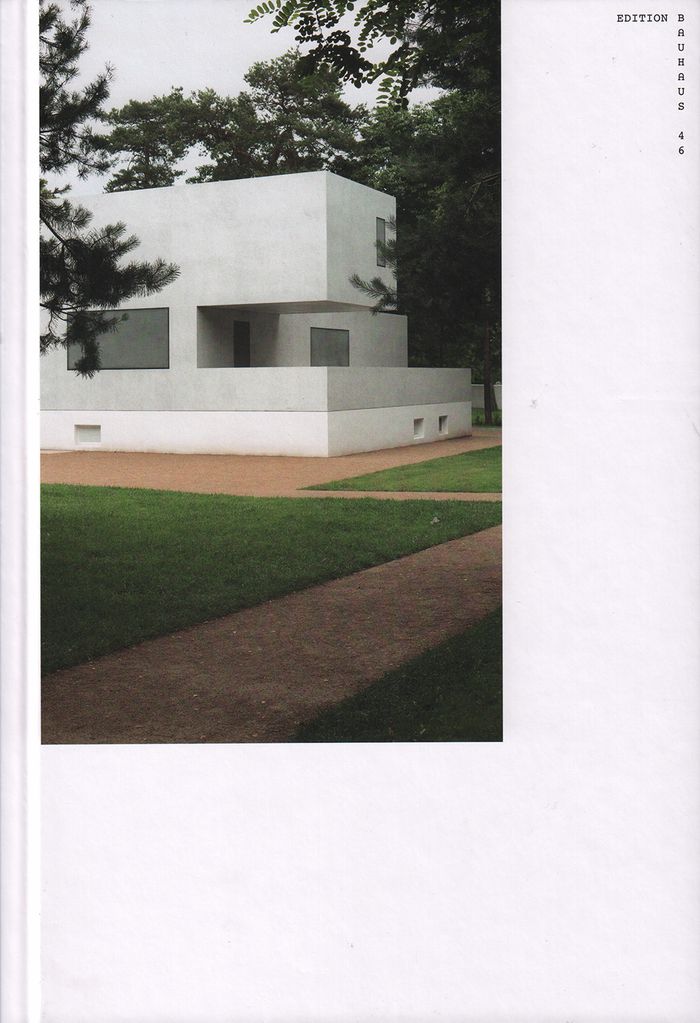Looking for Lenin
$42.50
(available to order)
Summary:
In the process of decommunisation, Ukraine has toppled all its Lenin monuments. The authors have hunted down and photographed these banned Soviet statues, revealing their inglorious fate. Photographer Niels Ackermann and journalist Sébastien Gobert, both based in Kyiv, have scoured the country in search of the remains of these toppled figures. They found them in the most(...)
Looking for Lenin
Actions:
Price:
$42.50
(available to order)
Summary:
In the process of decommunisation, Ukraine has toppled all its Lenin monuments. The authors have hunted down and photographed these banned Soviet statues, revealing their inglorious fate. Photographer Niels Ackermann and journalist Sébastien Gobert, both based in Kyiv, have scoured the country in search of the remains of these toppled figures. They found them in the most unlikely of places: Lenin inhabits gardens, scrap yards and store rooms. He has fallen on hard times - cut into pieces; daubed with paint in the colors of the Ukrainian flag; transformed into a Cossack or Darth Vader - but despite these attempts to reduce their status, the statues retain a sinister quality, resisting all efforts to separate them from their history.
Photography monographs
The future of public space
$25.50
(available to order)
Summary:
In this publication Rachel Monroe challenges American preconceptions of the wild, wide-open West by addressing issues of surveillance; the series’ first fictional piece, by China Miéville, covers an under-examined area of public space under the guise of detective fiction; a study of public art by Ben Davis sheds light on the myths and stigmas that have accrued to public(...)
The future of public space
Actions:
Price:
$25.50
(available to order)
Summary:
In this publication Rachel Monroe challenges American preconceptions of the wild, wide-open West by addressing issues of surveillance; the series’ first fictional piece, by China Miéville, covers an under-examined area of public space under the guise of detective fiction; a study of public art by Ben Davis sheds light on the myths and stigmas that have accrued to public art, also asking what it can become; Christopher DeWolf shares a sensory navigation trip through a directionless Hong Kong; Michelle Nijhuis writes on the shifting ecologies of national parks; Sarah Fecht explores architecture and social life beyond Earth; while Jaron Lanier meditates on the idea of public space online, linking the prevailing, free-for-all model of the internet with a characteristically American yearning for freedom and repudiation of rules and structure. Also included are examples of public art works by Lawrence Weiner.
Architectural Theory
The blind man
$90.00
(available to order)
Summary:
The Blind Man and rongwrong were seminal New York Dada magazines edited and published by Marcel Duchamp, Henri-Pierre Roché, and Beatrice Wood in 1917. This facsimile edition, introduced by Sophie Seita, celebrates the 100th anniversary of their publication. The box set also includes a two-color offset reproduction of Beatrice Wood’s poster for The Blind Man’s Ball (1917)(...)
The blind man
Actions:
Price:
$90.00
(available to order)
Summary:
The Blind Man and rongwrong were seminal New York Dada magazines edited and published by Marcel Duchamp, Henri-Pierre Roché, and Beatrice Wood in 1917. This facsimile edition, introduced by Sophie Seita, celebrates the 100th anniversary of their publication. The box set also includes a two-color offset reproduction of Beatrice Wood’s poster for The Blind Man’s Ball (1917) and a letterpress facsimile of Man Ray’s The Ridgefield Gazook (1915). Translations of the French texts by Elizabeth Zuba accompany the facsimile reprints. The Blind Man and rongwrong were part of a network of little magazines that introduced audiences to avant-garde movements in art and literature; they featured contributions of poetry, prose, and visual art by Mina Loy, Louise Norton, Robert Carlton Brown, Erik Satie, Walter Arensberg, Francis Picabia, Alfred Stieglitz, and others.
Contemporary Art Monographs
$70.00
(available to order)
Summary:
'Craft Becomes Modern: The Bauhaus in the Making' looks at the Bauhaus from the perspective of this noisy activity — handcraft. No term was more fiercely disputed there. Although conceived as “laboratories for industry,” a great deal was still done by hand in the Dessau workshops. Workshops at the Bauhaus straddled the different priorities and practical realities at play,(...)
Craft becomes modern : the Bauhaus in the making
Actions:
Price:
$70.00
(available to order)
Summary:
'Craft Becomes Modern: The Bauhaus in the Making' looks at the Bauhaus from the perspective of this noisy activity — handcraft. No term was more fiercely disputed there. Although conceived as “laboratories for industry,” a great deal was still done by hand in the Dessau workshops. Workshops at the Bauhaus straddled the different priorities and practical realities at play, falling somewhere between factory and craft business, between free experimentation and industrial contract work. From this field of tension, the Bauhaus tried to define handcraft anew as a utopian pursuit that could coexist with industrial culture. The Bauhaus’ interest in industrialization has been thoroughly studied; the persistence of craft among its teachers and students much less so. Craft Becomes Modern surveys this aspect of the Bauhaus’ teaching and work, and puts it in historical context.
Design Theory
Desk in exile
$19.95
(available to order)
Summary:
When the Bauhaus moved to Dessau, the desk moved with it, landing in the director’s office, where it was used as a demonstration of a vision of a modern office culture. The desk took up residence temporarily in the Lawn Road Flats in London before following Gropius to Lincoln, Massachusetts, in 1938. It has remained in Lincoln since then and is currently in the Gropius(...)
Desk in exile
Actions:
Price:
$19.95
(available to order)
Summary:
When the Bauhaus moved to Dessau, the desk moved with it, landing in the director’s office, where it was used as a demonstration of a vision of a modern office culture. The desk took up residence temporarily in the Lawn Road Flats in London before following Gropius to Lincoln, Massachusetts, in 1938. It has remained in Lincoln since then and is currently in the Gropius family’s private home. An index of the changing fortunes of the Bauhaus, Gropius’ desk itself becomes an actor in a complex history of changing locations and social environments. Desk in Exile traces the trajectory of this uniquely weighted object, offering a model of an object-based history of exile. Part of Spector Books’ series of readers on individual aspects of Bauhaus design, this volume comes out of the research and curatorial work carried out by the Bauhaus Lab 2016.
Design Theory
$78.00
(available to order)
Summary:
The focus of this large book is an 18th century Dutch cabinet from the Rijksmuseum’s furniture collection. This cabinet houses a collection of curiosities including a mini-apothecary’s shop filled with over 300 jars, pots, and bottles containing medicines. Concealed behind the rear wall of the cabinet, 55 secret drawers reveal a varied collection of over 2,000 naturalia(...)
The collector's cabinet and miniature pharmacy
Actions:
Price:
$78.00
(available to order)
Summary:
The focus of this large book is an 18th century Dutch cabinet from the Rijksmuseum’s furniture collection. This cabinet houses a collection of curiosities including a mini-apothecary’s shop filled with over 300 jars, pots, and bottles containing medicines. Concealed behind the rear wall of the cabinet, 55 secret drawers reveal a varied collection of over 2,000 naturalia specimens – including seeds, flowers, roots, resins, ores, and a great deal more. The cabinet was probably owned by a wealthy doctor or pharmacist and its contents were intended as a curiosity, for the amusement of a select group of friends. 21st century readers will be equally impressed by this exceptional Dutch collector’s cabinet.
Museums and Universal Exhibitions
Recent histories
$85.00
(available to order)
Summary:
By highlighting specific creative approaches and studying the sites and collective platforms that enable these practices, this book examines the critical mass that has gathered across generations of African image-makers and lens-based artists. In accentuating different perspectives within this generation and considering the infrastructures that often link them, Recent(...)
Recent histories
Actions:
Price:
$85.00
(available to order)
Summary:
By highlighting specific creative approaches and studying the sites and collective platforms that enable these practices, this book examines the critical mass that has gathered across generations of African image-makers and lens-based artists. In accentuating different perspectives within this generation and considering the infrastructures that often link them, Recent Histories provides a point of entry to engage critically with current practices, and opens up considerations about how to conceptualize the frameworks of contemporary African photography and video art. Recent Histories features the work of Edson Chagas, Mimi Cherono Ng’ok, Andrew Esiebo, Em’kal Eyongakpa, François- Xavier Gbré, Simon Gush, Délio Jasse, Lebohang Kganye, Sabelo Mlangeni, Mame-Diarra Niang, Dawit L. Petros, Zina Saro-Wiwa, Thabiso Sekgala and Michael Tsegaye.
Photography Collections
BIM is more
$36.99
(available to order)
Summary:
issue 01 available
$57.50
(available in store)
Summary:
Edition Bauhaus 46 When Dessau was bombed in early 1945, the Director’s House and Moholy-Nagy’s Master House were reduced to rubble as well. After the Dessau Masters’ Houses – epitome of the 20th-century artists’ colony – had been restored to their original state in the 1990s, a debate began on the reconstruction of the two houses destroyed in the war. In 2010, after(...)
The new masters’ houses in Dessau, 1925–2014
Actions:
Price:
$57.50
(available in store)
Summary:
Edition Bauhaus 46 When Dessau was bombed in early 1945, the Director’s House and Moholy-Nagy’s Master House were reduced to rubble as well. After the Dessau Masters’ Houses – epitome of the 20th-century artists’ colony – had been restored to their original state in the 1990s, a debate began on the reconstruction of the two houses destroyed in the war. In 2010, after consultation with the British star architect David Chipperfield, the decision was made to recreate the Master Houses of Gropius and Moholy-Nagy using contemporary means, rather than rebuilding them 1:1. And so they have now been reconstructed on the basis of designs by the Berlin firm Bruno-Fioretti-Marquez, as innovative reductions and abstractions of the original houses. This volume describes the chequered history of the Dessau Masters’ Houses, presenting the reconstructed buildings for the first time in book form, with photographs by Armin Linke and Heidi Specker.
Modernism
